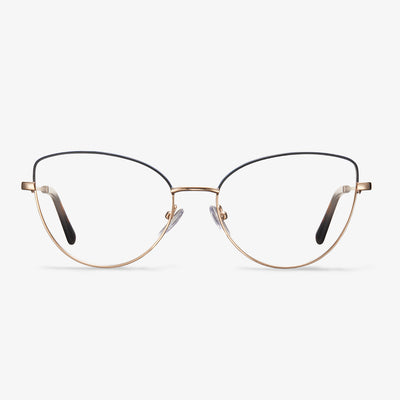Can You Get Prescription Gamer Glasses?
Most gaming glasses are not designed to be worn on top of your prescription eyeglasses, but you still have some other options.
You can order gaming glasses with prescription lenses. Make sure the frames are optical grade so they can accommodate lenses of varying thickness.
You can also choose clip-on gaming glasses because they are easy to store and light to wear.
Order daily glasses with anti-reflective or blue-light coating because they can also protect your eyes.
Who should wear blue light glasses?
Teenagers, middle-aged and old people need to wear blue light glasses. The lens of a teenager is clear, pure, and still developing. Their eyes are less resistant to blue light than adults and are more vulnerable to long-term exposure to blue light, which can promote the development of myopia. Teenagers study more nervous, are free to love to play computer games, love to watch TV programs. Blue light damage can be said to be everywhere. As a result, teenagers are among the biggest victims of blue light. Macular degeneration is a common disease in the elderly, usually occurring after the age of 45, and the incidence increases with age. Blue light can accelerate the progression of macular degeneration, especially in patients following cataract surgery. Blue-blocking glasses are still the best preventative measure.
Men’s clear glasses frames
Some men like the classic eyewear style like aviator, wayfarer, or rectangle eyeglasses. If you would like to refresh your daily look, the clear glasses frames with the unobtrusive appeal will deserve your shoot. The clear acetate eyeglasses frame with a round shape makes these clear round glasses a good choice for men.
How Do Adjustable Glasses Work?
Adjustable glasses are featured with the fluid-filled lens technology that lets you adjust the power of the lens based on the correction level you need. You can twist the dial until you can see clearly. So, adjustable glasses are also called dial vision glasses.
Each of the lenses on adjustable glasses has a membrane that moves outward or inward based on how much fluid the lens contains. The liquid comes from a small syringe connected to each arm of the glasses. You move the dial to pump fluid in or out of the lens. As fluid enters the lens, the lens’s power increases. This can correct farsightedness. Pumping the fluid out can correct nearsightedness.
The principle of adjustable glasses is the same as vision ability. You change the physical shape of the lens just as the physical shape of the eyeball so as to correct your vision.
What Are Anti-Glare Glasses?
Anti-glare glasses are made with lenses that have an anti-glare coating or anti-reflective coating. This is an extremely thin layer placed on the lens itself so as to remove any reflections you might see from the surface of the glasses. This improves your vision by reducing the amount of glare that reflects off of your lenses.
Features of progressive lenses
With the proper head position, the wearer can have a clear and continuous vision at all distances from the distal point to myopia through the progressive lens. When the eye moves from one area of vision to another, the eye adjustment process is natural and smooth, without any visual fluctuations. With natural vision and better adaptability, it is in line with physiological optics. The mid and near vision area is relatively small: Some wearers may feel that the gradient area of the progressive lens is smaller, which limits the width of the saccadic eye and requires increased head movement in order to achieve the same reading range. At medium and short distances, the wearer needs to coordinate certain head movements.
Find the right size
The right glasses should sit comfortably on the bridge of the nose, not pressed against the forehead or cheeks. But they don't stay at the tip of the nose for so long that they slip while squinting or wrinkling your nose. The fit of the nose determines the distance between the glasses and the face. A proper fit should allow the lens to be between 14 and 24 millimeters away from the eyes. When you want to find glasses that fit, don't clip, don't slip, and don't lead to discomfort, you have to find out the size you need.



















































